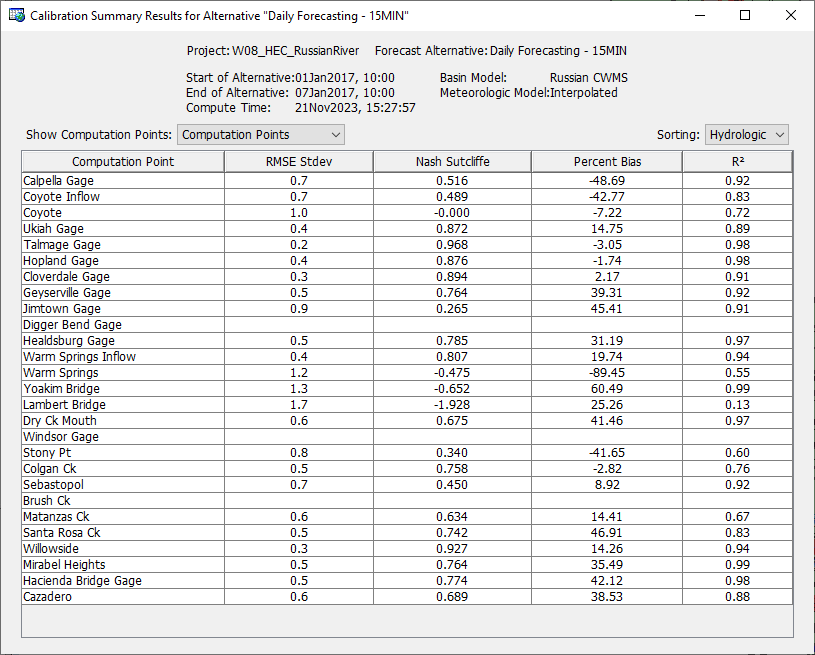Download PDF
Download page HEC-HMS Results.
HEC-HMS Results
HEC-HMS is used to compute watershed runoff given initial system states and watershed precipitation. There are two methods for viewing results in the CAVI, from the Reports tab in the Modeling module and by selecting the HEC-HMS elements in the Map window.
CAVI Map Window
There are icons present for each model in the forecast alternative within the map window when the Modeling module is active. Right-click on one of the HEC-HMS icons to view results.
Graphical
- Find the HEC-HMS icon of interest (subbasin, reach, or junction) and right-click.
- If multiple elements are in the area, you will need to select the element and program of interest.
- Select the Graph option from the menu.
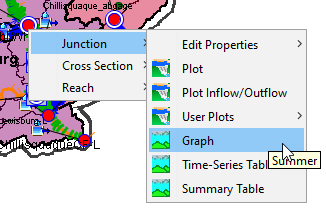
Now you can interact with the graph that HEC-HMS generates from the forecast results. The graph option is commonly used to assist in calibration of the HEC-HMS model, as it displays a simple view of the observed data (if available) and model results for the selected node.
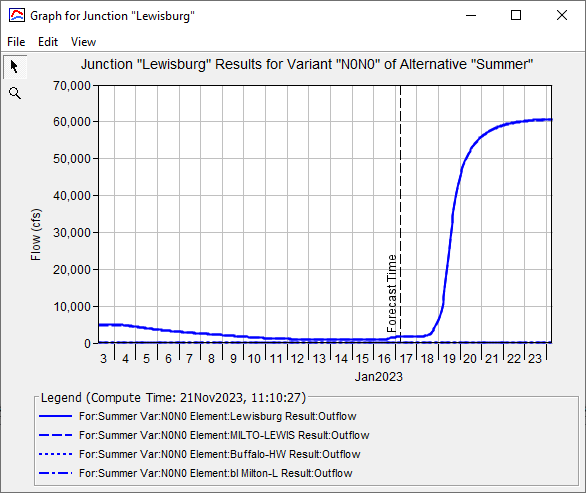
Time-Series Table
- Find the HEC-HMS icon of interest (subbasin, reach, or junction) and right-click.
- If multiple elements are in the area, you will need to select the element and program of interest.
- Select the Time-Series Table option from the menu.
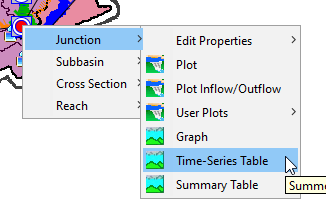
Now you can interact with the Time-Series Table that HEC-HMS generates from the forecast results.
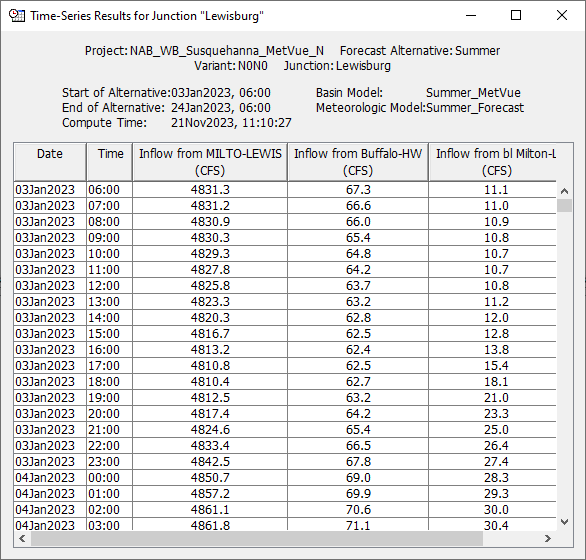
Summary Table
- Find the HEC-HMS icon of interest (subbasin, reach, or junction) and right-click.
- If multiple elements are in the area, you will need to select the element and program of interest.
- Select the Summary Table option from the menu.
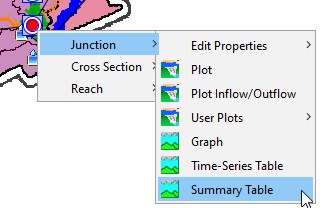
Now you can interact with the Summary Results Table that HEC-HMS generates from the forecast results.
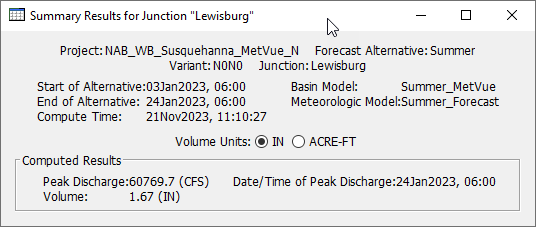
CAVI Reports Tab
The graphical and tabular view of model results and the summary table can also be accessed via the Reports tab. You must select the model element of interest within the Forecast Tree (in the example below it is the subbasin WB_Susq_ab_Mahaffey) and then click the appropriate option from the Reports Tab. The display will be the same as the options described above.
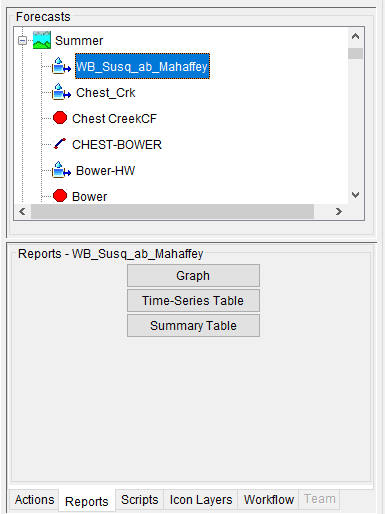
HEC-HMS Standalone
There are a few methods for viewing HEC-HMS results that have not yet been brought directly into the CAVI that may be useful for real-time modeling. You can access HEC-HMS directly from the CAVI by selecting the HEC-HMS icon on the top of the CAVI (when the Modeling tab is active). This will open the HEC-HMS model used in the Forecast Alternative.
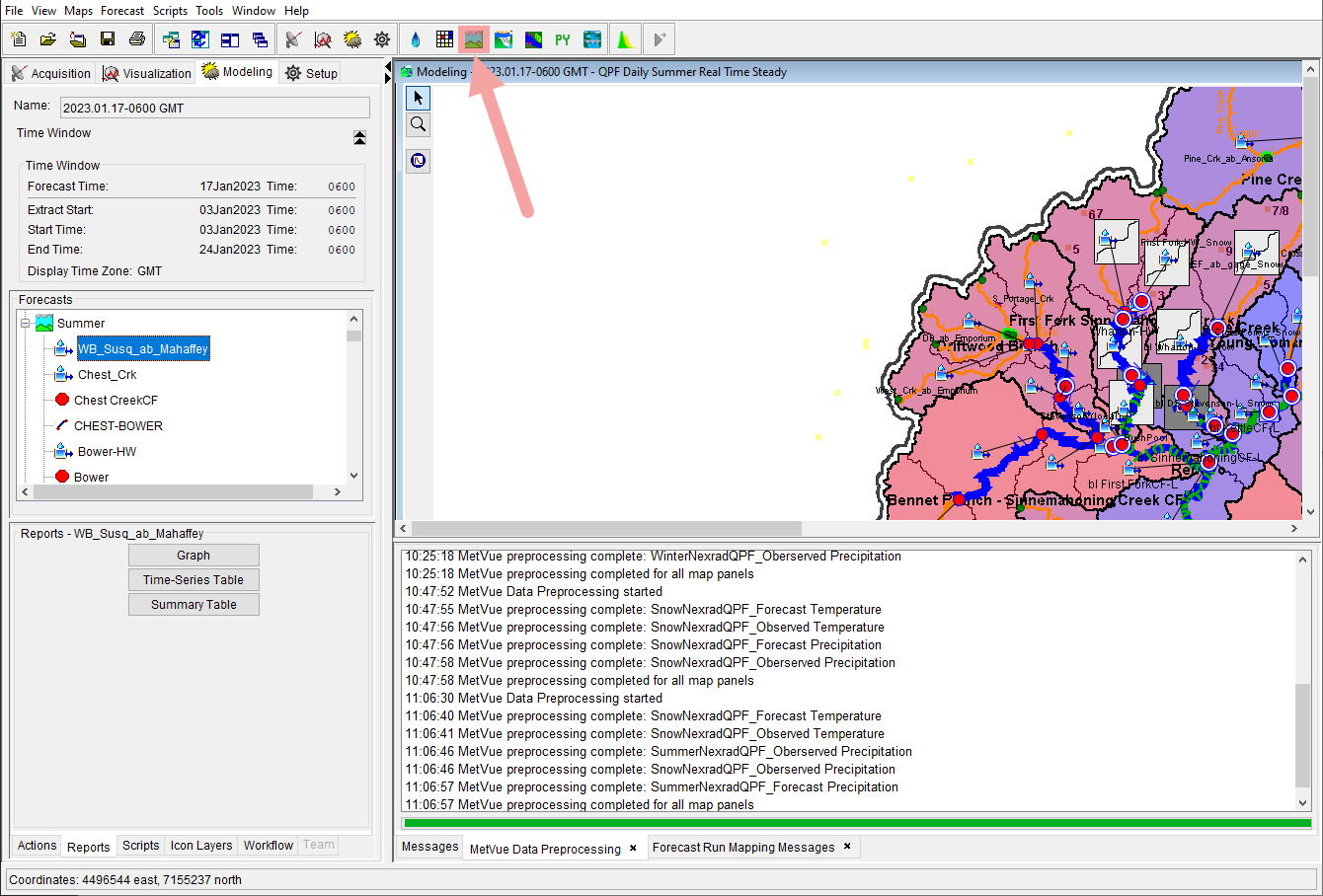
Visualization of Spatial Results
If your model uses the structured or unstructured discretization method, you can view model results spatially for the HEC-HMS project. This allows for quick viewing of a variety of model results across your entire model domain. These values can be varied temporally, allowing you to see how your model is responding across the entire simulation. There are several requirements to utilize this method, which are laid out here. Once you have the required model setup, you need to activate the spatial results in the forecast run editor.
- From the Compute menu in HEC-HMS, select the Forecast Alternative Manager option.

- Within the Forecast Alternative Manager, select the forecast alternative of interest and then click Edit.
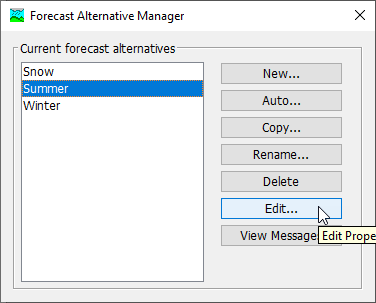
- Toggle the Spatial Results to Yes and choose an appropriate Spatial Interval.
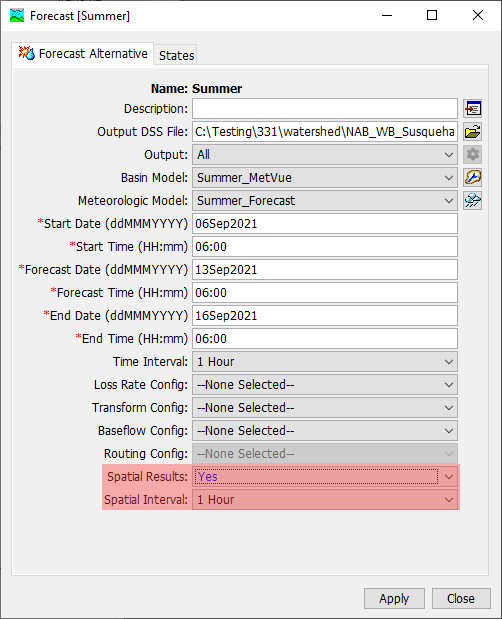
- Now you can access the spatial results options at the top of the HEC-HMS User Interface.

For more resources, you can visit the Viewing Spatial Results, Viewing Calibration Results, and Viewing Spatial Results for a Structured Discretization sections of the HEC-HMS documentation.
Calibration Summary Table
The Calibration Summary Table displays the statistics for all computational points in the HEC-HMS model. Select the Calibration Summary Table option from the Results menu in HEC-HMS to view the table.

Once the Calibration Summary Table is open, you can identify the areas of the model that need calibration. In the example below, there are some Nash-Sutcliffe model efficiency coefficient (NSE) values above 0.9, but there are also some negative NSE values. You should start calibrating the model where the NSE values are low and not spend as much time calibrating where NSE is already high.
